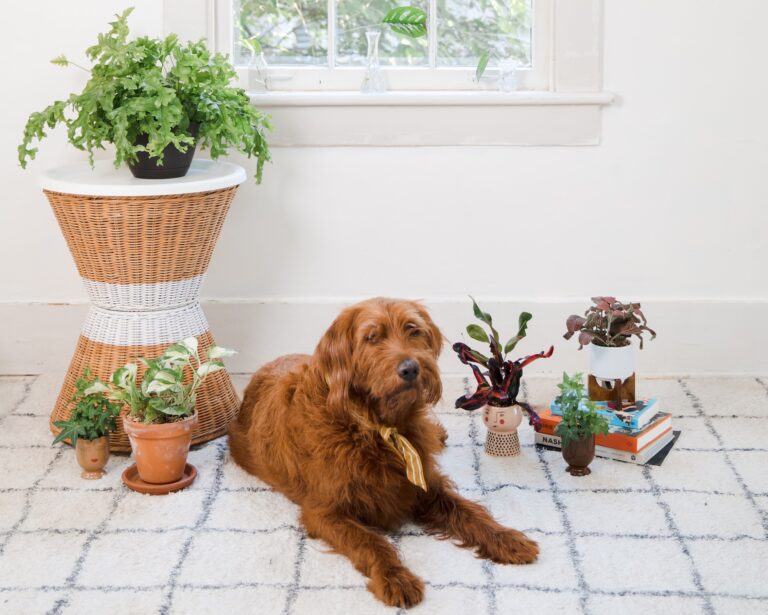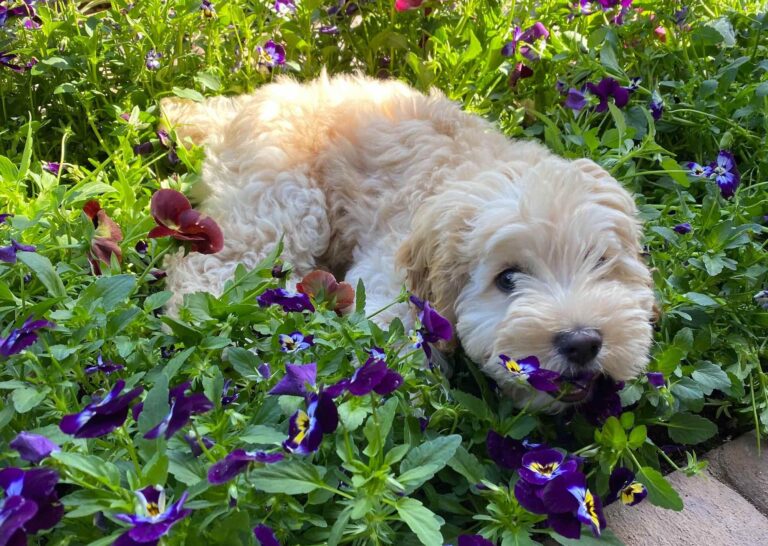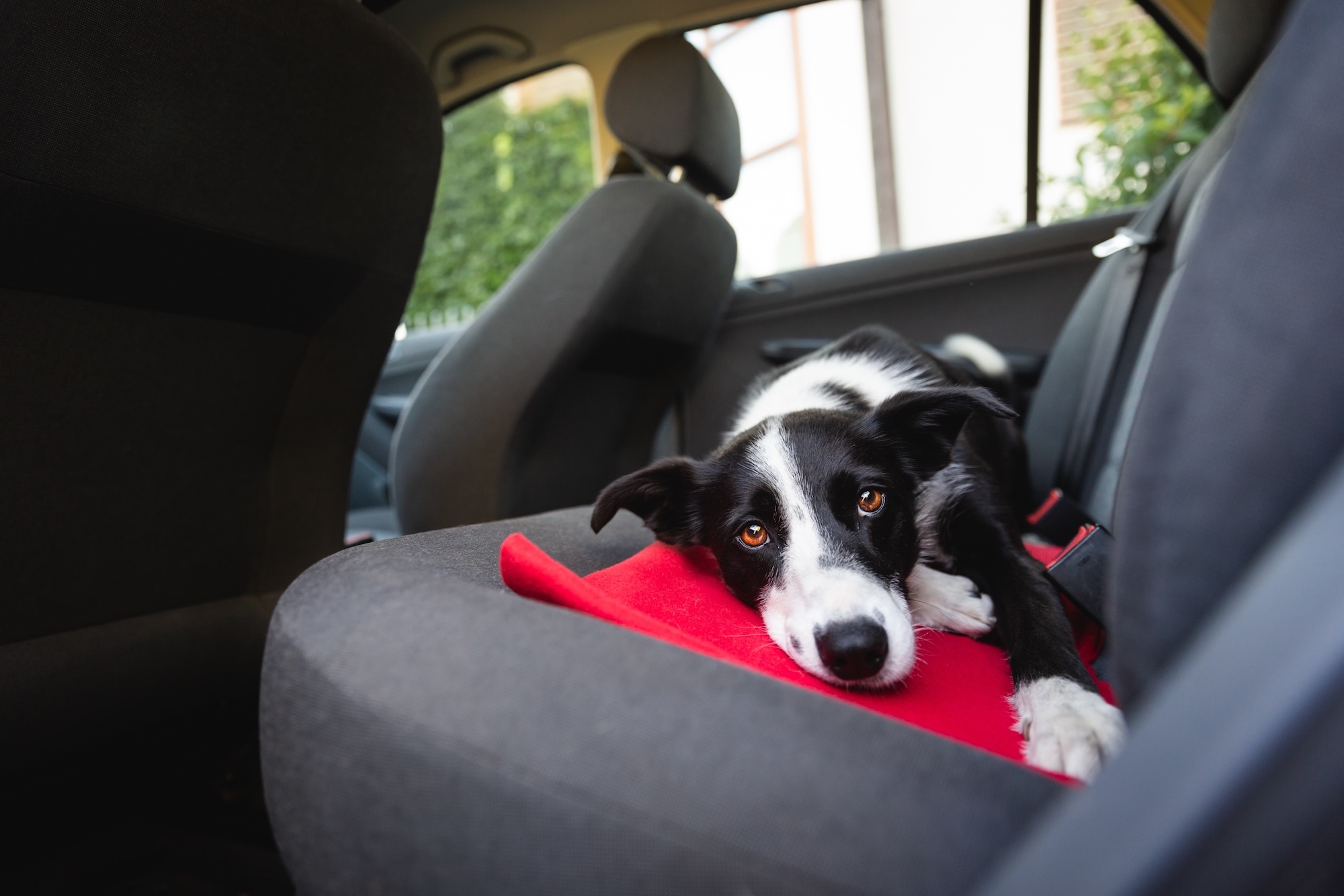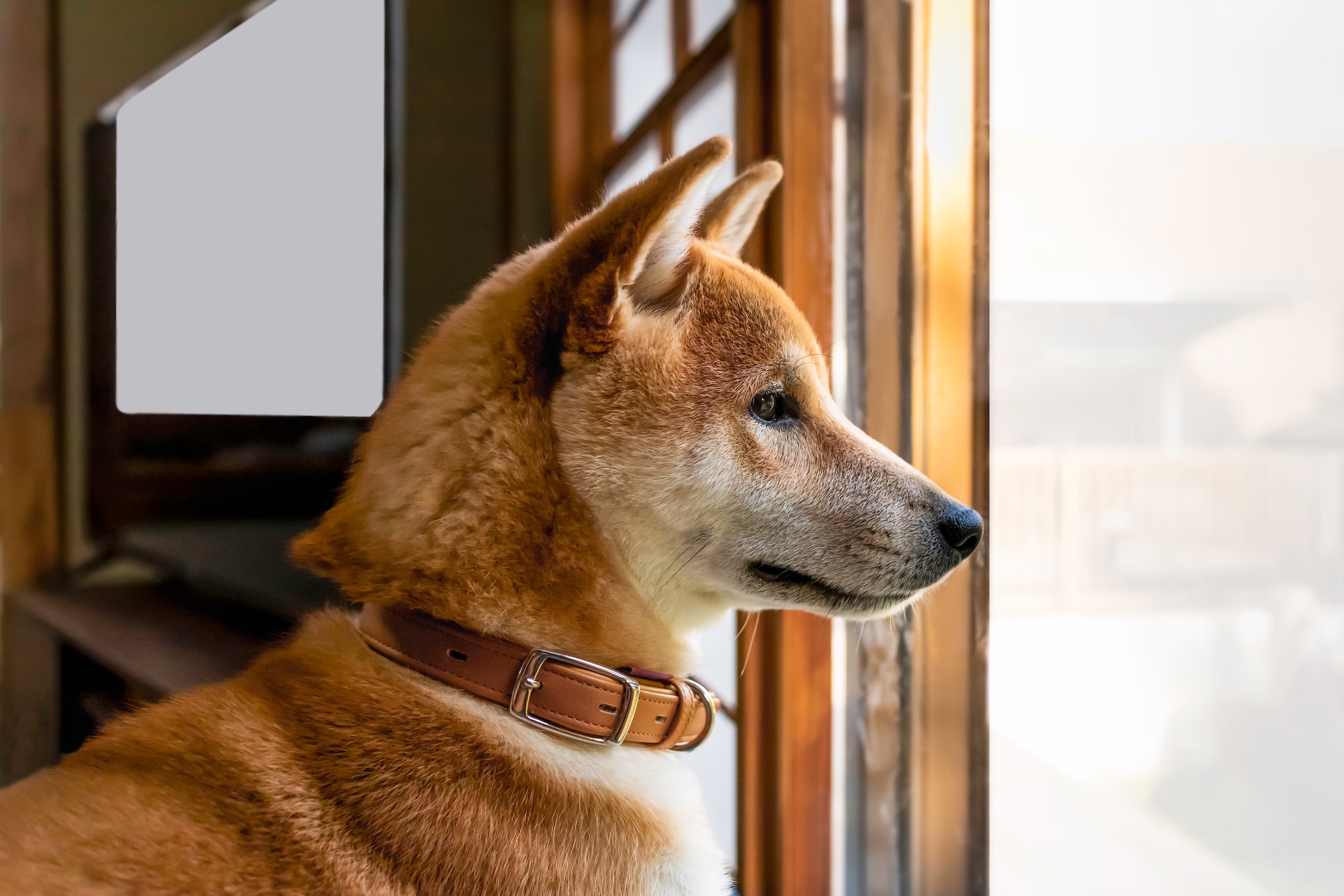A healthy home is a home full of life, love, and oxygen — so for the sake of both your and your pet’s well-being, it’s worthwhile to have some houseplants!
Keeping plants in the home has all sorts of scientific benefits, from boosting mood, cognitive function, concentration, and creativity, to reducing stress, fatigue, and airborne toxins. Caring for plants is an opportunity to slow down and indulge in the restorative powers of nature, and the right plant can bring life to even the dimmest corners of your abode, making the indoor environment a relaxing and lush one for all of its inhabitants.
But bringing the outdoors in can be confusing to pets, and in some instances, even risky. Whether you’re introducing a new houseplant to your dog, or your new dog to your resident houseplants, here’s some advice that will help ensure all of the living things in your home can live safely and harmoniously.
Getting along with greenery
The first thing to know is that it’s possible for dogs and plants to coexist. Many dogs are completely disinterested in houseplants, and at most might offer them a cursory sniff—but even for those whose dogs show more interest, one destructive episode ending in a soil-strewn living room still doesn’t mean that they’ll never live together in peace.
If you’re starting with a houseful of plants and adding a pup, or you’re bringing your first potted pride and joy into your dog’s domain, it’s up to you to manage the interaction of two life forms. That means establishing boundaries for your dog, and a healthy, respectful relationship. Those boundaries should apply to plants, and every other space, and object in your home.
That said, if you’ve been a plant parent first and foremost and you’re getting a new dog, you may have to make some accommodations. When it comes to choosing plants—and plant placement in your home—you should be putting your dog’s health and safety first.

Many houseplants are considered poisonous to dogs. But don’t panic.
Let’s get right to it. Many popular indoor houseplants are considered tropical, based on their native environments, and the vast majority of tropical houseplants — the ones you see the #plantmoms surrounded by on Instagram, like cascading philodendrons, towering fiddle leaf figs, hardy snake plants, and many more—are at least mildly toxic to cats and dogs when ingested.
This news can be alarming to pet owners as it can make adding a little greenery to their space seem like scattering used needles around a nursery. But before you discard your windowsill succulent in a blind panic, it’s important to have a sense of context.
Tropical plants are the ones regularly available as houseplants because they’re most suited to indoor growing in the northern hemisphere. And if they weren’t going to evolve to grow spikes like cacti, for the sake of their own survival they needed to develop a method of deterring other creatures from eating them. While animals native to those same environments might’ve had time to evolve immunity to these toxins, your dog has not.
The other important piece of context is that some plants are mildly or moderately toxic, and produce mainly gastrointestinal distress if consumed, while others are highly toxic and can be fatal if eaten. It’s worth familiarizing yourself with which plants are most dangerous before you shop for new leafy friends (see below). The ASPCA has a great searchable database of plants that specifies which are toxic to dogs and cats (and, interestingly, horses too) should you want to avoid all toxic troublemakers entirely.
“While there are hundreds of plants that are considered ‘poisonous’ according to the ASPCA Animal Poison Control Center’s plant database), the majority of these cause gastrointestinal signs like vomiting and diarrhea,” says Dr. Justine Lee, DACVECC, DABT, emergency critical care veterinary specialist and toxicologist. “There are about 5-10 plants that I REALLY worry about as a veterinary specialist and toxicologist. Plants like cardiac glycoside types (digitalis-containing plants like Foxglove and Oleander) blue-green algae, Sago palm, certain types of mushrooms, and lilies (for cats) can be deadly. I advise that these never be in the household or yard.”
When in doubt about something your pet has ingested, call your veterinarian, ER vet, or the ASPCA Animal Poison Control Center for life-saving advice, Dr. Lee advises. If you feel your dog is particularly plant-obsessed and very likely to nibble, despite training, err on the side of caution and only keep “pet-safe” plants (see a list of dog-friendly options below).
With a combination of caution when plant shopping, smart selection of placement in the home, and some best practices for introducing the two living species, you can keep your dog safe while enjoying the benefits of greenery.
Signs of plant poisoning
Signs that your dog has ingested a toxic plant vary by the species of plant, amount and part of the plant consumed, and size of the dog.
If your dog has eaten a toxic plant, signs can range from moderate to severe and include:
- Irritation of the mouth
- Upset stomach
- Lethargy
- Allergic dermatitis
- Drooling
- Vomiting and diarrhea
- Tremors
These signs can progress to include difficulty breathing, heart problems, shock, coma, and death.
Some plants should be avoided entirely
Knowing how serious the outcome can be, it’s worth knowing which plants to simply steer clear of. Some of the most notably toxic are below. The Pet Poison Helpline has a list of the most poisonous plants for dogs and cats here.
- Dieffenbachias
- Sago Palms
- Birds of Paradise
- Foxglove
- Oleander
- Lily of the Valley
- Japanese Yew
These plants have chemical compounds in them that can cause difficulty breathing or organ failure if even a small amount is ingested. In the case of these plants, the best idea is to avoid having them in the home, or in your garden, entirely. Blue-green algae, though not technically a plant, is extremely dangerous to dogs and should be scouted for, and avoided when you’re around bodies of water. Similarly, some types of mushrooms, also not considered plants, are deadly, including those in the Amanita family. If you have a backyard, do a sweep for any mushrooms if you’ve added a dog to your family.

These plants are dog-friendly
If you’re looking for completely dog-safe options though, they do exist! Do a bit of research, and ask your plant store pro what options they have that are nontoxic to dogs. Some of the most commonly available nontoxic, indoor-appropriate plant options include:
- Spider plants
- Calatheas
- Ferns (so many varieties!)
- Rhapis (or Lady) palms
- Ponytail palms
- Parlor palms
- Bamboo palms
- Areca palms
- Peperomias
- Echevarias (and many other types of succulents!)
- Hoyas
- Tillandsia (aka air plants)
- Cast iron plants
Even with dog-safe plants, plan to keep them out of reach of your dog, or ensure that your dog isn’t interested in eating them, as anything unusual your dog eats can cause stomach upset.
Regardless of the specific variety though — and especially if you’re unsure of it — if your dog does eat a houseplant and experiences vomiting, diarrhea, or other poisoning symptoms described in this article, contact your vet as soon as possible.
Location, Location, Location
While, again, many pets are disinterested in plants in the same way that they’re disinterested in a lamp or a table, the easiest way to keep your plants from being compelling enough to eat is to keep them placed in an (appropriately sunny, but otherwise) out of the way location.
With cats, climbing can be harder to predict or stop, but with dogs, simply placing the plant out of reach should be enough to deter their interest. If you are going to the effort of putting the plant someplace extra safe, just make sure “out of reach” really means out of reach, and your dog can’t grab it by standing on two legs or jumping up. Hanging plants are an attractive option!
Make sure you’re also taking into account your dog’s normal, everyday behavior when placing plants in your home. If you know your dog charges around a corner at dinnertime, don’t place plants there. It’s an unnecessarily risky move that will likely end with a ruined plant and a chastised dog — when they weren’t behaving badly.
Large trees or shrubs can add a lot to the design of a room, but a big pot of dirt on the floor can be tempting to dig, or even urinate, in. One simple way to reduce the temptation is to cover the top layer of soil with decorative rocks, which are much less appealing to dig. But when it comes to urinating, this is where ongoing training and relationship management are important. Your dog should already have boundaries regarding objects in the house. And when it comes to dogs marking plant pots, that behavior falls under regular bathroom etiquette—you have to teach them that inside is not an acceptable place to be spraying (even if it looks and smells a bit like outside).
Make your plants invisible
Even to some humans, houseplants can evoke, at most, feelings of indifference. To your dog, they’re hardly as exciting as most other things they love—food, toys, and your attention. Many destructive behaviors exhibited toward plants are the result of a lack of stimulation.
The best way to turn your plants from a source of wonder into just another piece of furniture is to keep your dog’s attention engaged elsewhere when you’re introducing a new plant into your house. When bringing a new plant into your space, give your dog a toy, a puzzle filled with treats or something exciting to focus on, so that they’ll hardly notice the new plant when you’re placing it. Otherwise, if the new addition to the living room is the most exciting part of their day, or if there’s a lot of agitation around this new addition, it’s understandable that it would capture their attention.
Plants can become a target for dogs with separation anxiety, or who are under-stimulated. Be sure your dog is getting enough walks and mental stimulation during the day.
When you’re leaving the house, it’s always a good idea to leave your dog with toys that provide some mental stimulation to keep them engaged and their energy directed somewhere acceptable, whether your concern is houseplants or any other items around the home.
Boundaries make good housemates
Teaching a dog to be respectful of the space of anything that you consider off limits is essential, says Blake Rodriguez, trainer and founder of Dream Come True K9 in New York. This goes for plants, Christmas trees, and anything else that’s not appropriate for them to chew, or jump on. Consistent training helps ensure that your dog would no more eat your plant than jump up and grab food from your dining room table.
If you’ve got a puppy at home, plants might be a compelling target for teething, so start off right by keeping plants out of reach, and directing their energy and attention to appropriate chewing and playing vehicles. Steer clear of any plant that’s even mildly toxic if you’ve got a puppy in the house.
Monitor puppies, or any new dog closely when they’re around plants. Make sure that play and excitement happen well away from the plant. Curiosity and attention around the plant should be met with an interruption that gains your dog’s attention. Follow the interruption with either calling the dog away from the area or stepping in and moving the dog from the area to a more appropriate place—and then reward them for an appropriate alternative behavior. Keep reinforcing the idea that good things happen when they are not anywhere near the plant.
Make a lovely, leafy, lively home
With their air-purifying properties and their natural, peaceful hues, plants help make your home even more pleasant for you and your pets — especially as we’re all spending more time indoors.
With a little consideration to the greenery that will be the best match for your space and your four-legged roommate, and some prior thought as to how to introduce the two parties, there can be peace in the household jungle.
Pet health is an important topic. That’s why The Farmer’s Dog editorial team carefully vets and reviews every piece of content we publish. We deliver evidence-based advice and medically reviewed facts that focus on pet nutrition, health, and well-being. The mission of this site is to help people provide the best care possible for their dogs by publishing only trustworthy, accurate, and timely health information from a group of passionate experts.
This article was vetted by vets.
Reviewed by Deepti Johar, DVM;
Danielle Woolf, DVM.




